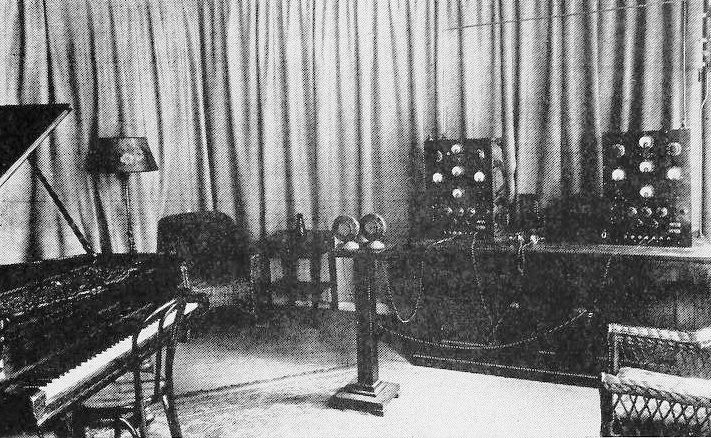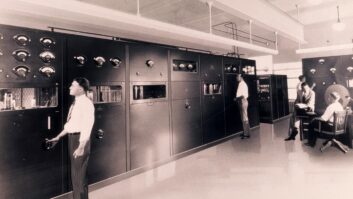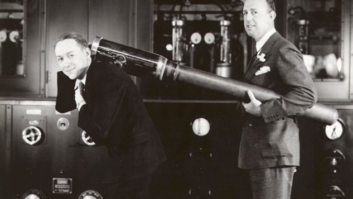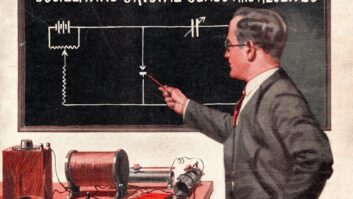This is the second installment in a recurring series that will explore radio technology from years past, noting advancements and historical moments month by month. Read January’s story here.
As we enter the first full week of February, Radio World is looking back at the developments that have shaped radio broadcasting during the past 100 years.
100 Years Ago – February 1924: Connecticut radio pioneer Franklin Doolittle applies for a patent on stereophonic broadcasting. In the application, he claims “My invention takes advantage of the auditory principle referred to with the end in view of providing a method of and apparatus for transmitting and receiving the phase differences in the arrival of sounds at the ears of a listener present at the performance to a distant point by radio so that the radio listener may obtain the same acoustical impression as to the location of the source of the sound or sounds as though he too were present. To this end I employ two separate channels of radio transmission which may be obtained in a variety of ways…” Doolittle demonstrated his “binaural” scheme with the use of two separate AM radio transmitters and dual receivers.

75 Years Ago – February 1949: “Apparently ignoring the repercussions that followed the 1938 Orson Welles’ “War of the Worlds” broadcast, Ecuador’s Radio Quito tried out a Spanish-language version of the Martian invasion drama, presenting it initially as “breaking news.” Listeners fled their homes in panic before realizing it was a hoax. Mob violence then erupted, with 21 dead and a number of others injured before the military could restore order. The building housing Radio Quito’s studios and a companion newspaper were also wrecked. Arrests followed, with 12 station employees, including its art and drama editors, being jailed.
50 Years Ago – February 1974: Repercussions from last fall’s OAPEC embargo on oil shipments to the U.S. and their unintended consequences to broadcasters are still making news, with the FCC fast-tracking pre-sunrise authorizations for AM stations that have lost an hour of morning drive time operation due to the enactment of year-round daylight-saving time. Concerns are also being raised about reduced radio listenership as commuters abandon their cars for mass transit due to gasoline shortages. However, the Radio Advertising Bureau is assuring stations that the impact is minimal, and that the new nationwide 55 mph speed limit may actually increase listenership, as it will lengthen drive times.
25 Years Ago – February 1999: The FCC appears ready to move ahead on establishing a low-power FM broadcasting service, proposing three classes of stations with ERPs between 1 and 1,000 Watts. Four of the five Commissioners are in favor of the new service, with the lone holdout, Harold Furchtgott-Roth, calling it “a severe incursion on the rights of current broadcasters, as well as on the value of their licenses, which will be drastically undercut in the market if the proposals are adopted.” Entities promoting the establishment of an in-band/on-channel digital audio broadcasting service in the U.S. are also raising concerns over possible analog-to-digital interference.
Stay tuned for next month’s installment!





